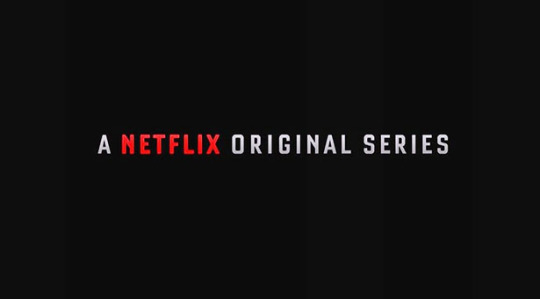#but it's surprisingly difficult to find accurate information on some of the serials
Text
A Dickens Calendar



A calendar of every Dickens novel and its serialisation. One page version under the cut.

#dickens daily#dickens#charles dickens#tumblr book club#books#yes I spent far too much time making this and so thought I should inflict it upon the world#you will likely need to zoom in quite a lot to read any of it#also there may be some errors#but it's surprisingly difficult to find accurate information on some of the serials#and there's some conflicting information as well#I made this a few months ago and am finally posting it#hoping this will help as a visualisation of some of the decisions I'm making
21 notes
·
View notes
Text
COMM 3P18 Blog #2
Welcome back! Did you miss me... Just kidding. As the week has continued on so has my learning in COMM 3P18. First focusing on specific media rating and target market, to interpreting and decoding such mass media texts. Using my own personal examples with the help of real-world examples I have noticed that media in today society is basically a commodity, and in order for an item to be sold like one, you need to know what consumers need. It has become clear that we “need” more than what we really do.
I think back to when I was a kid, watching TV with my two older brothers, and as soon as a commercial were to come on, one of us would go to the bathroom, or grab snacks, and would only rush back at the sound of one of us hollering “IT’S BACK ON!.” This is that notion of “free” television where we as the consumer are forced to sit through an advertisement as a price to pay. As stated in the textbook “at the same time that the television program is being “sold” to the audience, the attention of the audience is being “sold” to advertisers”, the audience commodity (Sullivan, Pg 81). But now, commercials are something that I rarely see due to streaming services such as Netflix. Netflix has found a new was to generate revenue while still giving the consumer (me) what I want. Through a monthly fee, I am able to watch a movie as a whole, I am able to pause or play it whenever I would like. Netflix was the beginning of more streaming services, so they also had to keep up with producing more and more media content for viewers to keep up. I found this similar to a news piece we looked at in lecture. “Why Youtube Content Creators are Burning Out” was an article based on youtubers who have become too stressed to churn constant content out for their viewers. Although Netflix has multiple people helping to create content, it has become clear that they now have harder competition that is currently willing to put out content that Netflix may not be able to get certain rights to. So similarly, Netflix and Youtubers cant stop producing content without their viewers going elsewhere. Now that it’s spooky season (October), my roommates and I are looking for classic Halloween movies to get us into the mood of the season. The other day we were looking specifically for “Halloweentown”, a movie we all used to watch when we were younger. We first checked Netflix, but to our surprise, it was not available, so without even a flinch, we went to a separate streaming service to find the movie that we craved to watch. This is a perfect example of the implication that large media sources have when they can't produce the content media audiences crave, we look elsewhere. This is why uses and gratifications of audiences have become an increasingly important topic in the world of media. We have smaller niche audiences all over the world who crave different things, and by using the research of uses and gratification companies are able to research what audiences members want to get from those specific mediated forms. I believe this is why the example of Walmart was used in the textbook because Walmart even though it's not a media source, is the king of using consumer information to fit the needs of what they want in the future.

Uses and gratifications are becoming an increasingly popular subject as the world becomes more technologically advanced, it is after all the understanding of why people use specific media to satisfy certain needs. As Sullivan states “Uses and gratifications relies upon self-reports of individuals, information about individuals’ inner states of mind is only accurate insofar as they can readily identify their needs and can recall them” (Sullivan, Pg.122). I found this interesting because the more I thought about this quote the more I realized how accurate it is with the people around me, and things I hear around me. In class we looked at Herzog, who asked why women listened to the radio, now although this was is the 40’s, I believe there would be similar results if you asked the same when listening to the radio now. The results revealed it was an emotional release, a fantasy as wishful thinking, and a source of advice.
During the summer I similarly was using the radio for entertainment, when I heard a story that had a similar outcome. Now when I listen to the radio, personally it’s something to pass time as well as create amusement throughout my drive, I never sought advice from the radio hosts. I was listening to 99.9 virgin radio while driving to work, mostly to listen to music. Yet, after a song, the hosts came on and started to talk about people who need dating advice. The hosts ended up calling an audience member who had written into them earlier, concerning a recent date she went on, but never received a callback. The woman explained how the date went wonderfully, she even went home with the man at the end of the night, this is what lead her to wonder why she never received a callback. I found it quite odd she chose to call a radio station for advice rather than someone who is closer, such as a family member or friend. I then thought back to what Herzog said, and how in that specific study women would also use the serial radio as a source of advice. This must be due to her own self-fulfillment to be gratified by a large audience of others (those who listen to the radio) through the media source, which would be the radio in this case. It may also depend on her situation. This gratification can be due to the fact she is embarrassed to tell someone who is close to her, so instead seeks help from another source to ensure she receives an emotional release.

The reading in the past week of 3P18 was surprisingly interesting, and truly grasped my attention when it comes to watching movies or tv shows. We recently learned about the hit Netflix series “Dexter” which originally aired on Showtime. I’ve never watched an episode of Dexter, but after just a few previews I found myself extremely interested in watching this show in the future. The narrative adds a twist to the character Dexter Morgan, who is a professional blood-spatter analyst, but also a serial killer to those who “deserve it”. As I watched more and more previews I couldn't help agree with Dexter's character, even if I would personally do something so brutal myself. I then related it to Bandura’s theory of Moral Disengagement. Bandura suggests that we as viewers “use rationality to either excuse immoral behavior to redefine it as more” (Decoding The Code, 2016). I was able to simply redefine the actions of Dexter killing a human, to make it seem “ok” based on the fact he was killing bad people. If I found his character utterly appalling or maybe had different views on how criminals should be treated, then my thoughts would fit under a certain moral domain when I examine character like Dexter. Thus, if it weren't for the way I thought about criminals (I HATE THEM..) then my moral code would change my view of Dexter to be more negative. I started to think about shows I specifically watch, such as Grey's Anatomy, and the Office when talking about the modes of audience engagement. While watching Grey’s Anatomy, I get extremely attached to characters, crying when they cry, happy when they are. It truly makes me feel as though I am part of the show. This would be considered under the first mode of audience engagement Transparent: where I “get lost in the fictional world of the text” (Granelli, Zenor 2018, Pg. 5058). This is when I put myself a little too deep in the show, with the strong emotions that I feel towards the characters. For example, 5 main characters in the show got into an extremely bad plane crash, two characters died, while others terribly injured. This episode was extremely upsetting and even made me shed a few tears when it came to some of my favorite characters dying. Now, on the other hand, The Office, a comedic show, I don’t find myself shedding tears much. The characters in the office are awkward and almost uncomfortable to watch which leads me to have less of an emotional attachment to the characters. I find this show connects more to the second mode of audience engagement, referential. Referential is when I as an individual “read the text as like life… Assessing the meaning of the text, the individual moves outside of the text itself, and compares it his or her own real life for interpretation” (Granelli, Zenor 2018, Pg. 5058). For example, the boss Michael is an odd character, truly a loose cannon, while Pam the front desk receptionist is a down to earth woman. I think I compare well to Pam, in the way she handles certain things Michael's character does. Michael once decided he was going to jump off the office building into a bouncy castle to make a point about suicide. Pam eased him down to talk him out of the situational pretending she had a “gift” for him, and he had to come down to receive it. Now, I don't work in an office nor plan on realistically having a boss like that, so I was able to move outside of the text itself, and compare if I would do the same thing in such a situation.

Now, I know that I “need” all these media to keep me entertained, but until we looked at audiences in the news I had never really thought about how we are appealed to an audience member... What do producers know about me? and how? According to Bloomberg, there has been a huge controversy over Netflix tailoring its movie or tv show promotions based on race. “Netflix users have complained that the service is trying to manipulate them into watching certain programs by trouting secondary characters that are the same race as the viewer” (Holman, Shaw 2018). Now, personally, I have never noticed this… I also am a white female, which makes it even more difficult for me to notice something like this. But, it did get me thinking about what images Netflix “recommends” to me as a user to watch a specific Netflix program. Is this an example of culture industry? The culture industry is defined as the “process of manufacturing dominant ideologies” (Sullivan 2013, Pg 139). This theory was discovered a while ago, based on ruling class, which was white males. It’s difficult to say if Netflix chooses to base movies and TV shows off this considering I enjoy a lot of the content produced, also, due to the fact I wouldn't necessarily call myself a feminist. But with still wondering how media producers know what I want to watch and how I did, in fact, find a connection in the intertextuality of the media. When we as individuals see logos, we are able to quickly associate a brand with a specific meaning. Netflix, although I don’t notice the potential racial recommendations, I do notice them pushing their own TV shows. I have never enjoyed a Netflix original, and even though I don’t watch them, Netflix constantly puts them on my recommended page. But, as the brand signifier “Netflix” I now know not to even bother with watching a preview or giving the show or movie another chance due to my understanding that those show won't be much good (personal opinion). It’s clear that Netflix makes more money when we watch an original, so this is why they push so hard for us as viewers to watch it. But since I now associate the word Netflix on the image of a new tv show or movie as a Netflix original, I can avoid the disappointment of their terrible productions.

We know media producers need us to watch or go on their content, and now it is clear that we need media to fulfill our own needs. To fill a need, media needs to find what we seek in the first place, and through ratings and recommendations, media can find what we like and why we like it. But, with our great need, will companies like Netflix be able to keep up with their consumers? I guess we will see.
Works Cited
Good, J. (2018). Lecture on Audience studies. Personal Collection of J. Good, Brock
University, St. Catharines ON.
Granelli, S., & Zenor, J. (2016) Decoding “The Code”: Reception theory and moral judgment
of Dexter. International Journal of Communication, 10, 5056-5078.
Sullivan, J. (2013). Media Audiences: Effects, users, institutions and power. Sage Publications
Inc., New York, NY
Sundar, S., & Limperos, A. (2013). Uses and grats 2.0: New gratifications for new media.
Journal of Broadcasting & Electronic Media, 57(4), 504-25.

0 notes